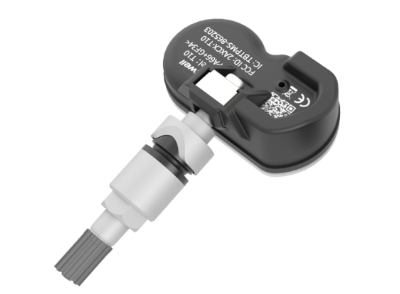Introduction
Imagine driving on the highway at 70 mph, and suddenly, your tire pressure warning light flashes. Do you ignore it—or pull over?
That small, blinking light is controlled by your TPMS sensor—a tiny device that can prevent accidents, save fuel, and even extend tire life. Yet, many drivers don’t really understand what it does, how it works, or when to replace it.
In this guide, you’ll learn:
- What a TPMS sensor actually is
- Why it’s more than just a “tire light”
- Common signs your TPMS sensor is failing
- Costs and replacement tips every car owner should know
By the end, you’ll not only understand your car better—you’ll also feel more confident every time you get behind the wheel.
What Is a TPMS Sensor?
TPMS stands for Tire Pressure Monitoring System. The TPMS sensor is the small device inside each tire that monitors air pressure and sends real-time data to your car’s computer.
Its main job? To alert you when your tire pressure is too low or too high—preventing unsafe driving conditions.
There are two main types of TPMS sensors:
- Direct TPMS – Installed inside each tire, measuring exact pressure.
- Indirect TPMS – Uses wheel speed sensors to detect pressure changes.
Fun fact: Since 2007, U.S. law requires all new vehicles to have TPMS sensors, after reports linked underinflated tires to thousands of accidents.

Why Is a TPMS Sensor So Important?
You might think, “I can just check my tires manually.” True—but TPMS sensors provide real-time, automatic alerts that can save lives.
Benefits of a working TPMS sensor:
- Safety first: Prevents blowouts and accidents from underinflated tires.
- Saves money: Proper tire pressure improves fuel economy and reduces tire wear.
- Eco-friendly: Well-inflated tires reduce CO2 emissions.
- Convenience: No need to check tires with a gauge every week.
Think about it this way: Driving without a functioning TPMS sensor is like flying blind—you won’t know there’s a problem until it’s too late.
Signs Your TPMS Sensor Is Bad
How do you know if your TPMS sensor needs attention? Here are the most common warning signs:
- Tire pressure light stays on even when tires are properly inflated.
- Flashing warning light on startup (indicates sensor malfunction).
- Inconsistent readings across different tires.
- Battery failure (most sensors last 5–10 years, then die).
- No alerts at all when tires are dangerously low.
If your TPMS light flashes for a minute then stays on, that’s usually a failing sensor—not just low pressure.
How Long Do TPMS Sensors Last?
On average, TPMS sensors last between 5 to 10 years.
The main culprit behind failure? Battery depletion—and since most TPMS sensors have sealed batteries, replacement of the entire sensor is necessary.
TPMS Sensor Replacement: Cost & Process
How much does it cost to replace a TPMS sensor?
- Sensor only: $40–$100 each
- Labor costs: $50–$75 per tire
- Full set replacement (all 4): $300–$500
Can you replace it yourself?
Technically, yes—but it requires removing the tire from the rim. For most drivers, it’s best handled by a professional mechanic.
TPMS Sensor vs. Regular Tire Checks
You might wonder: “If I check my tires manually, do I still need TPMS?”
The answer is yes—because:
- Pressure can drop suddenly while driving.
- Seasonal temperature changes affect pressure overnight.
- A slow leak might go unnoticed until it’s dangerous.
Think of TPMS as your 24/7 tire bodyguard—always watching, always alerting.
FAQs About TPMS Sensors
1. Can I drive with a bad TPMS sensor?
Yes, but it’s risky. You’ll lose the automatic warning system, which can lead to dangerous underinflation.
2. Do I need to replace all sensors at once?
Not always, but replacing them in sets ensures even lifespan and reliability.
3. Can TPMS sensors be reset?
Yes—many vehicles allow you to reset via the dashboard. But if the sensor is dead, a reset won’t help.
Conclusion:
Your TPMS sensor is more than a light on your dashboard—it’s a safety net.
Replacing it on time can save you from accidents, costly tire replacements, and wasted fuel.
Next time your tire pressure warning light comes on, don’t just brush it off. Check your tires, and if needed, replace that sensor.

